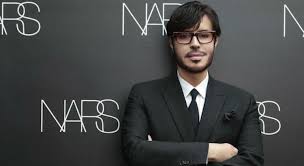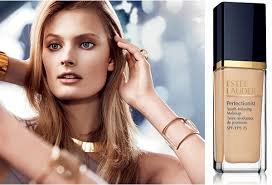Color Theory in Fashion - Enhancing Style with Colors
Discover the significance of color theory in fashion. Explore how understanding color theory can elevate your style.

Color Theory in Fashion is a powerful language that speaks to our emotions, influences our perceptions, and plays a central role in the world of fashion. Understanding color theory is not just a matter of aesthetics; it's a fundamental aspect of creating compelling and harmonious fashion statements. In this article, we will explore the importance of color theory in fashion, delving into the psychology of color, color combinations, and how color choices can enhance personal style.
The Psychology of Color
Color psychology is the study of how different colors affect human emotions, behavior, and perceptions. In latest fashion trends understanding the psychological impact of color is crucial for creating the desired mood and impression. Here's a breakdown of some key colors and their associated emotions:
Red
- Emotions:?Passion, energy, love, and excitement.
- Fashion Use:?Red is a bold and attention-grabbing color often associated with confidence and sensuality. It's frequently used in eveningwear and statement pieces.
Blue
- Emotions:?Calmness, trust, reliability, and intelligence.
- Fashion Use:?Blue is a versatile color suitable for a range of styles, from casual to professional. It's a popular choice for denim and business attire.
Yellow
- Emotions:?Happiness, optimism, and warmth.
- Fashion Use:?Yellow adds a vibrant and cheerful touch to outfits. It's often used in summer fashion and accessories.
Green
- Emotions:?Freshness, nature, and growth.
- Fashion Use:?Green is associated with sustainability and is used in eco-friendly and outdoor-themed fashion.
Purple
- Emotions:?Luxury, creativity, and mystery.
- Fashion Use:?Purple is often chosen for elegant and regal looks. It's a popular color for evening gowns and accessories.
Black
- Emotions:?Elegance, sophistication, and mystery.
- Fashion Use:?Black is a classic color in fashion, known for its slimming effect and versatility.
White
- Emotions:?Purity, simplicity, and cleanliness.
- Fashion Use: White is a symbol of freshness and minimalism. It's commonly used in summer street style inspiration and bridal wear.
Orange
- Emotions:?Energy, enthusiasm, and creativity.
- Fashion Use:?Orange is a vibrant and attention-grabbing color often used in activewear and sporty fashion.
Understanding the psychology of these colors allows fashion designers and individuals to evoke specific emotions and create a desired atmosphere through clothing choices.
Color Harmony and Combinations
Creating visually appealing outfits goes beyond choosing individual colors; it involves understanding color harmony and combinations. Color harmony refers to the pleasing arrangement of colors in a way that feels balanced and aesthetically pleasing. There are several color schemes used in mens fashion tips and design:
Monochromatic
- Definition:?Monochromatic color schemes use variations in lightness and saturation of a single color. For example, different shades of blue, from light sky blue to deep navy.
- Fashion Use:?Monochromatic outfits create a clean and sophisticated look that's easy to pull off.
Analogous
- Definition:?Analogous color schemes involve colors that are adjacent to each other on the color wheel. For instance, yellow, yellow-green, and green.
- Fashion Use:?Analogous color schemes offer a harmonious and visually pleasing appearance.
Complementary
- Definition:?Complementary color schemes use colors that are opposite each other on the color wheel, such as red and green, or blue and orange.
- Fashion Use:?Complementary colors create high contrast and visual impact. They are often used for statement pieces.
Triadic
- Definition:?Triadic color schemes involve three colors evenly spaced around the color wheel. For example, red, yellow, and blue.
- Fashion Use: Triadic color schemes are vibrant and balanced, making them suitable for creative and eye-catching womens summer outfits.
Split-Complementary
- Definition:?Split-complementary color schemes are a variation of complementary colors. They use one base color and the two colors adjacent to its complementary color. For example, blue, yellow-orange, and red-orange.
- Fashion Use:?Split-complementary schemes offer a mix of contrast and harmony, making them versatile for various styles.
Personal Style and Color Choices
Your personal style is a reflection of your personality, preferences, and values. Understanding color theory allows you to make intentional color choices that align with your style. Here's how color can enhance personal style affordable luxury brands:
Defining Your Style
- Minimalist:?If you prefer clean and understated looks, you might gravitate toward a monochromatic or analogous color scheme, focusing on neutrals like black, white, and gray.
- Bohemian:?A bohemian style often incorporates earthy tones like browns, greens, and yellows to create a relaxed and nature-inspired look.
- Bold and Creative:?Those who embrace bold and creative styles might experiment with complementary or triadic color schemes to make a statement.
Emphasizing Features
- Highlighting Eye Color: Choosing clothing colors that complement your eye color can make your eyes pop. For example, green ethical clothing brands can enhance green eyes, while purple can make hazel eyes stand out.
- Accentuating Skin Tone:?Wearing colors that complement your skin tone can create a healthy and radiant appearance. Warm-toned individuals may look great in earthy tones, while cool-toned individuals can pull off jewel tones.
Setting the Mood
- Confidence:?If you want to exude confidence, incorporating red or bold colors into your wardrobe can help you stand out and make a strong impression.
- Calmness:?For a sense of calmness and tranquility, pastel and cool tones like light blue and lavender can create a serene atmosphere.
Cultural and Societal Significance
Colors also carry cultural and societal significance that varies across different regions and contexts. It's essential to be aware of these connotations to ensure that your sustainable clothing brands choices are respectful and appropriate. For example:
- Weddings:?In many Western cultures, white is the traditional color for weddings, symbolizing purity and new beginnings. In contrast, red is a common wedding color in many Asian cultures, representing luck and prosperity.
- Religious Significance:?Colors often hold religious significance. For instance, in Hinduism, saffron is considered a sacred color, while in Christianity, purple is associated with Lent and penance.
- Social Movements:?Colors can be used to support social and political causes. The use of pink to symbolize breast cancer awareness or the wearing of specific colors during Pride Month are examples of how fashion can be a form of silent protest and support.
The Impact of Color Trends
Fashion is not static; it evolves with time, and so do color trends. Color trends eco friendly clothing are influenced by a combination of factors, including cultural shifts, societal events, and the creative vision of designers. Staying updated on color trends can help you keep your style fresh and relevant. Fashion magazines, runway shows, and social media platforms often showcase the latest color trends.
In the world of fashion, color is a language that allows individuals to express themselves, create moods, and craft compelling statements. Understanding color theory, including the psychology of color, color combinations, and personal style considerations, empowers individuals to make intentional and harmonious fashion choices. Whether you're aiming for a minimalist look, embracing bold creativity, or simply seeking to enhance your personal style, color plays a central role in making your affordable luxury?cloth brands choices resonate with who you are and how you want to be perceived.
What's Your Reaction?















